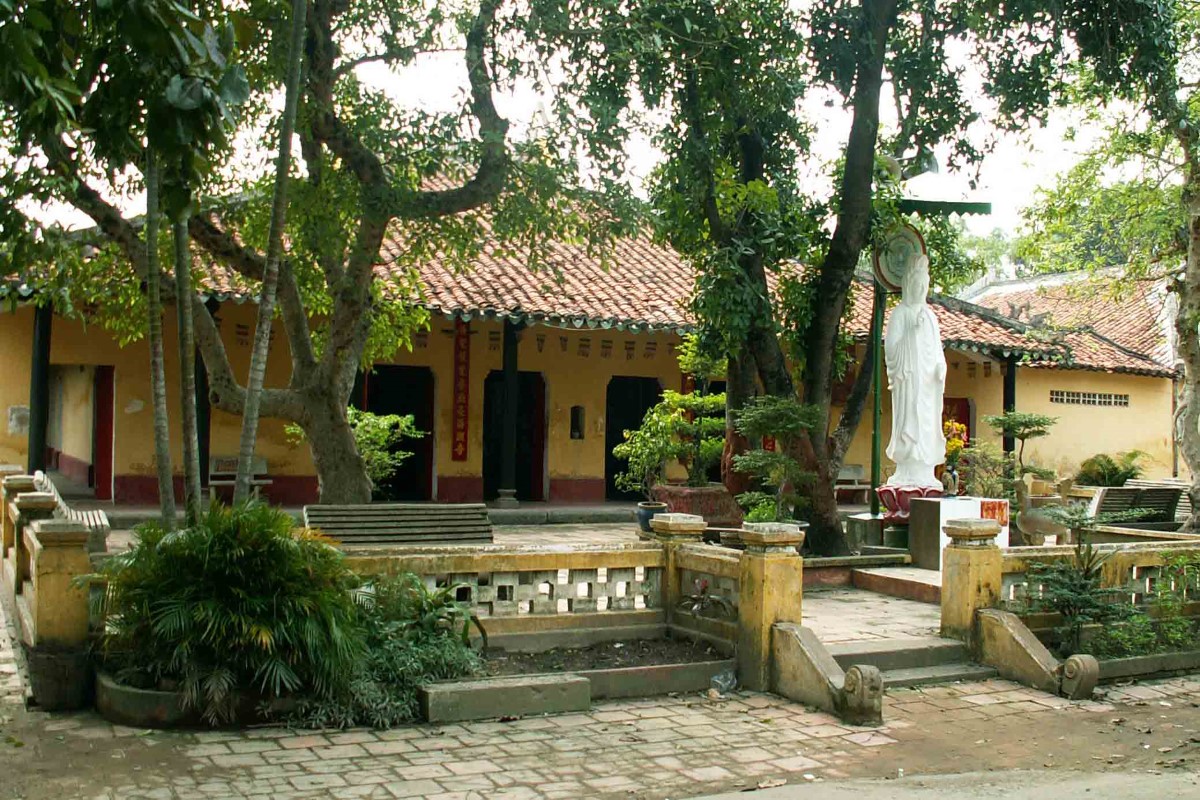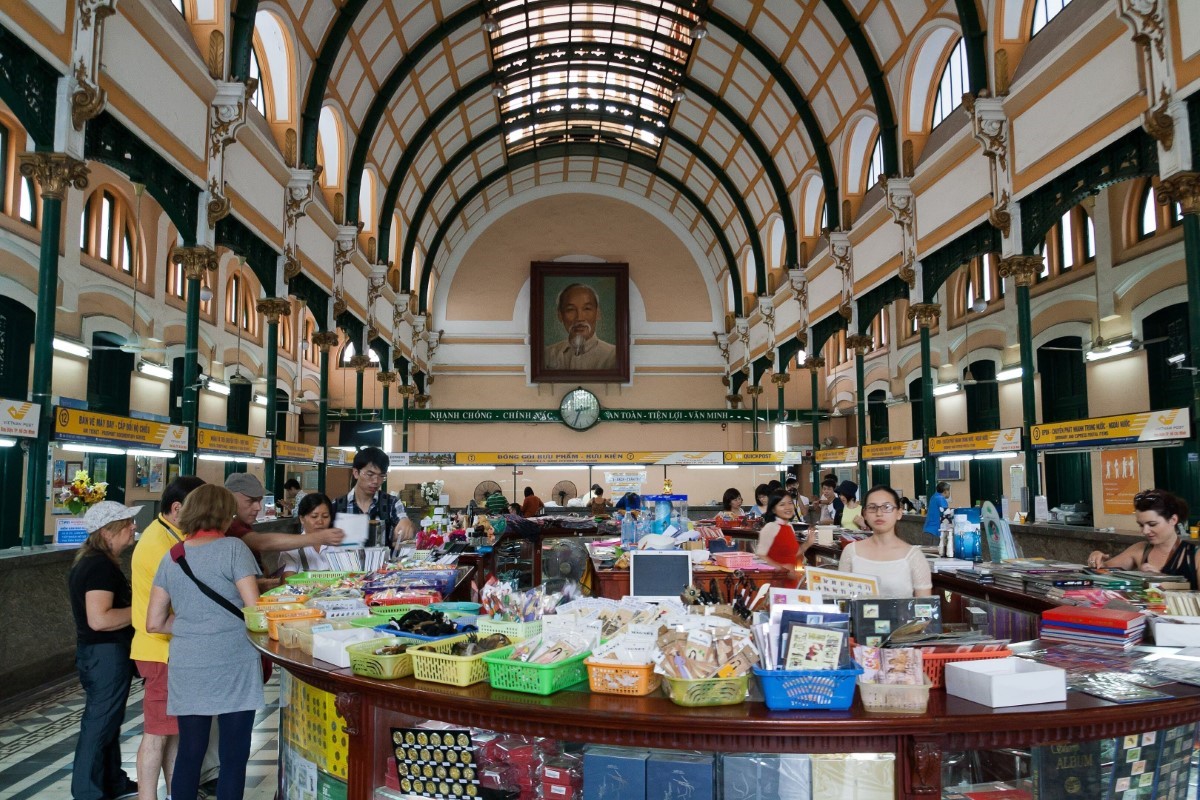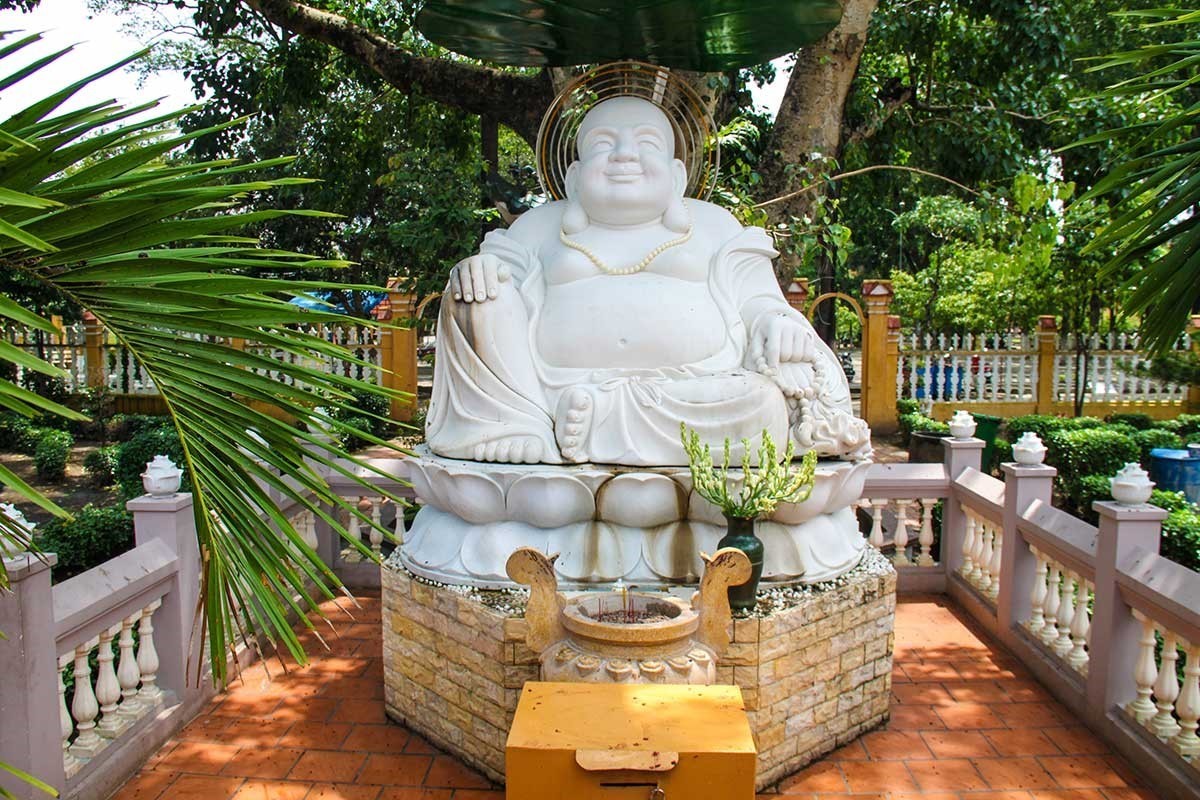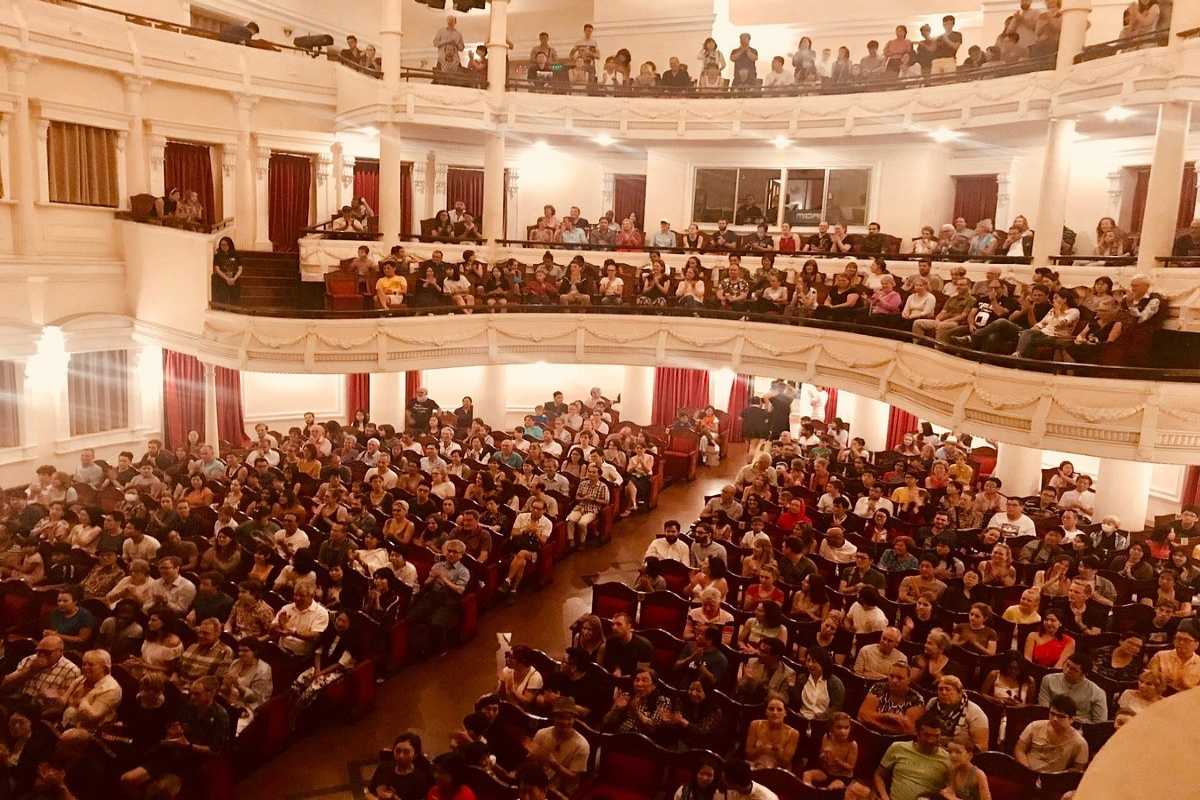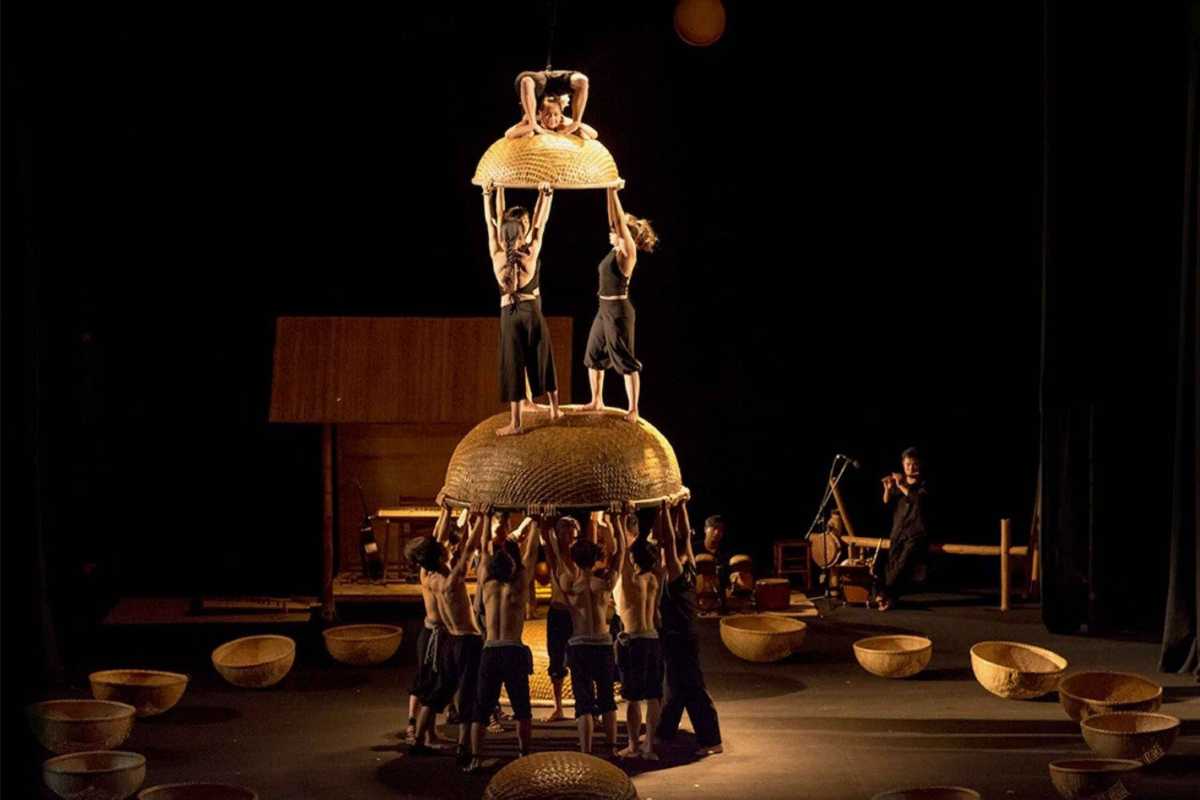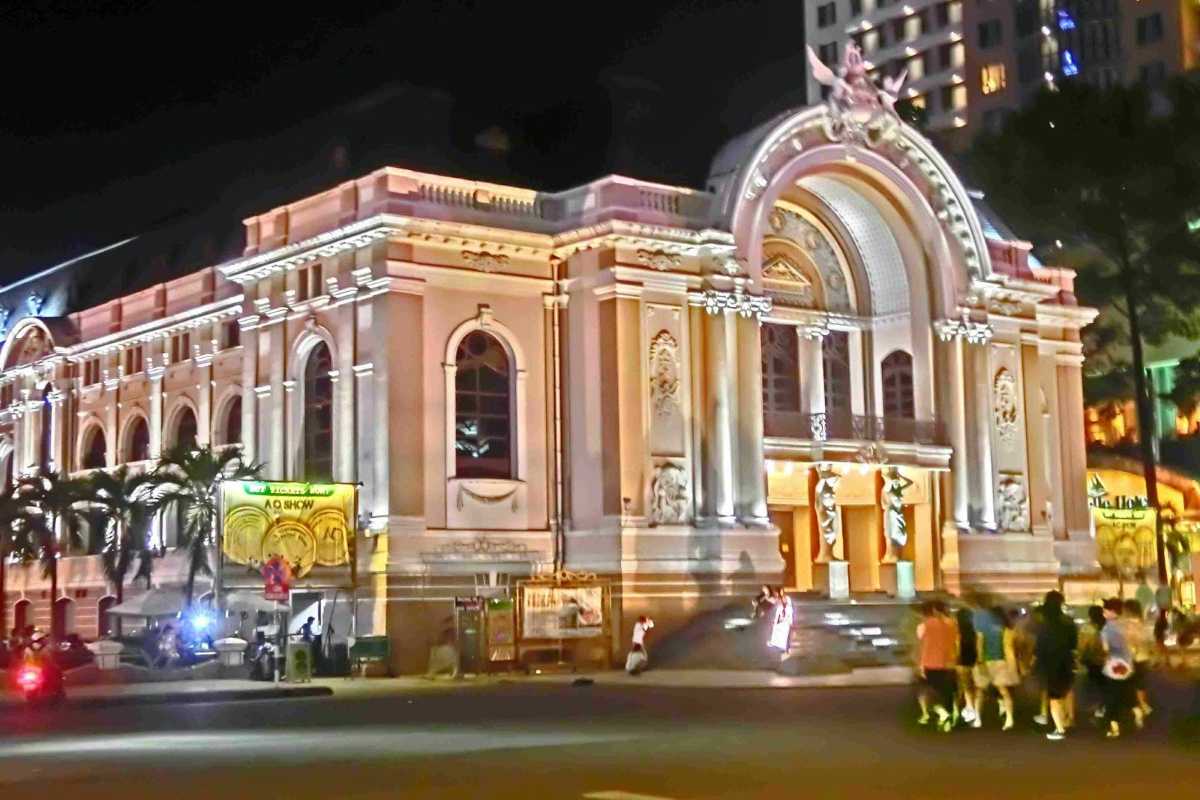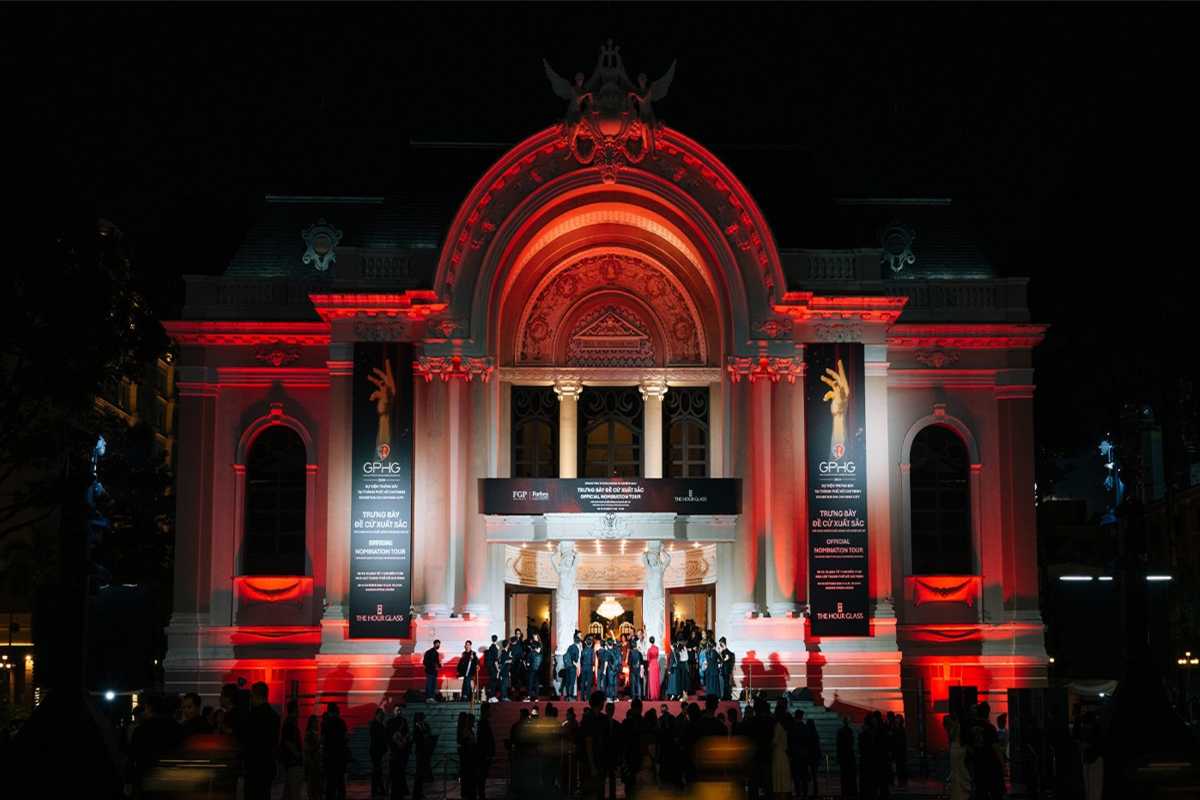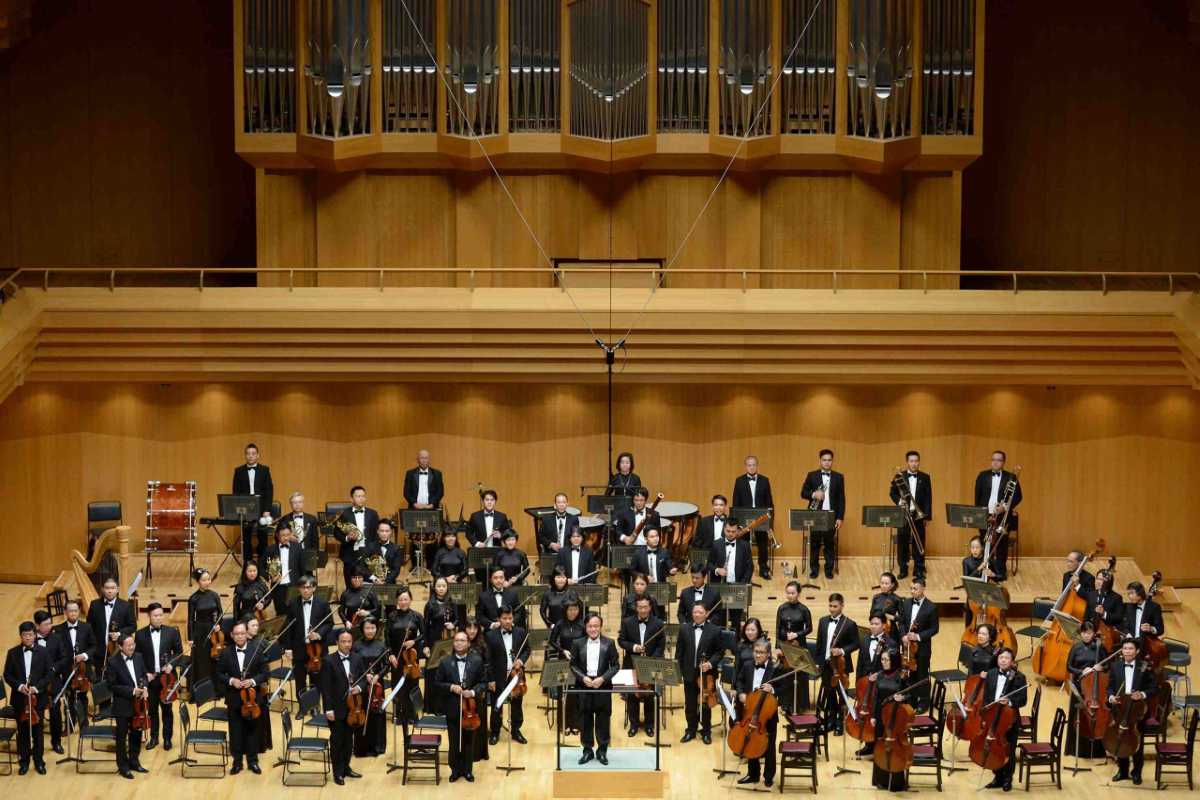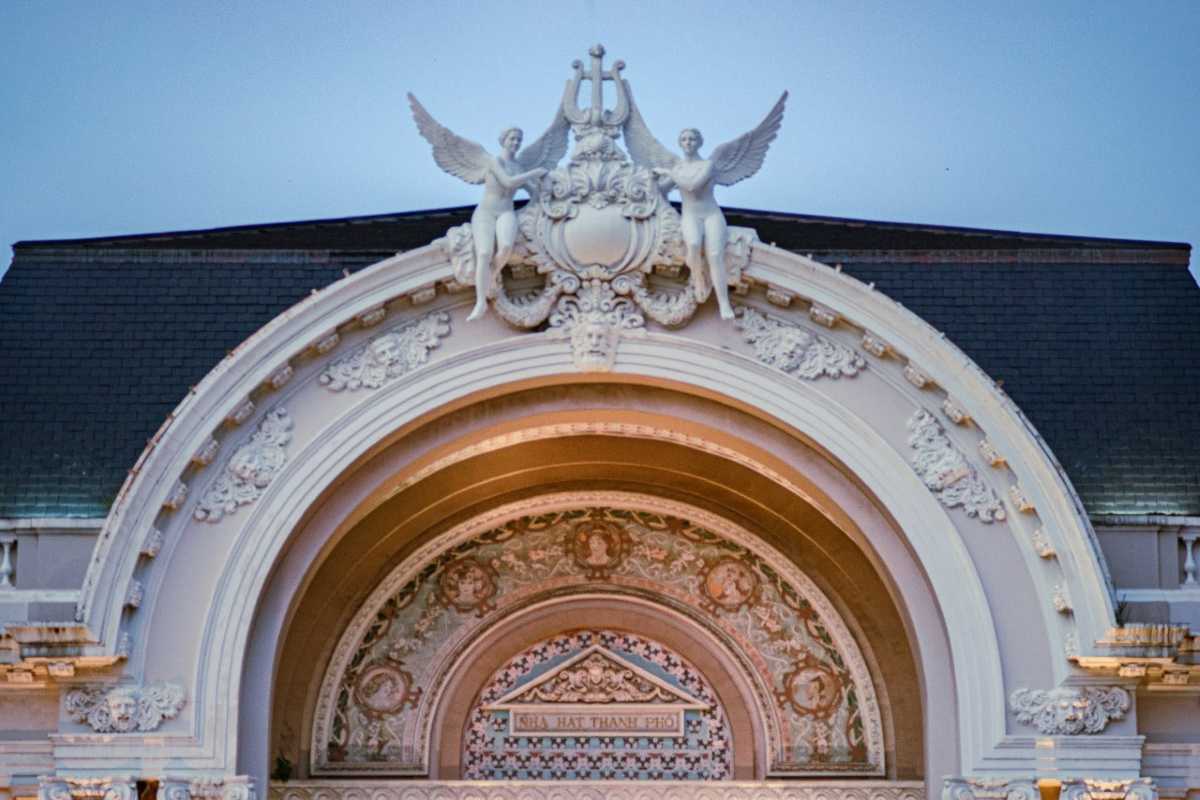Saigon Opera House: Ultimate Guide to Shows, Architecture, and Culture
The Saigon Opera House offers a stunning example of French colonial architecture in the heart of Ho Chi Minh City, hosting vibrant cultural performances like the AO Show and traditional Vietnamese arts. Its elegant design and rich history create a unique cultural experience for visitors.
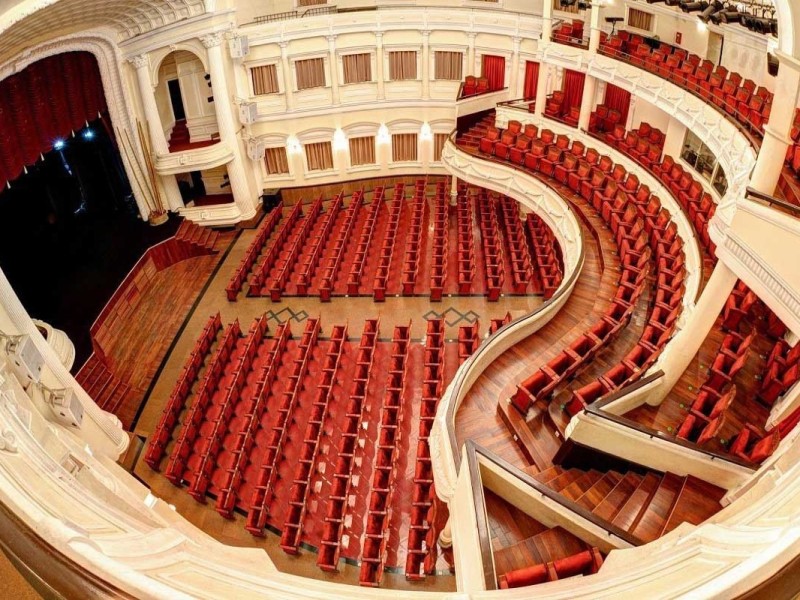
Discover the Saigon Opera House – A Landmark of Culture and History
Steeped in history and architectural grandeur, the Saigon Opera House stands as a testament to both the colonial and cultural heritage of Ho Chi Minh City. Built in 1897 by French architect Eugène Ferret, this theater is an enduring symbol of the city’s French colonial past and has evolved into a vibrant hub for cultural performances, hosting shows that range from traditional Vietnamese art to modern ballet and symphony orchestras. This landmark, officially known as the Ho Chi Minh City Municipal Theatre, draws thousands of tourists and locals alike with its breathtaking French colonial architecture, exquisitely detailed interior, and captivating performances. Located in the heart of District 1, it is not only a top attraction in Ho Chi Minh City but also a reflection of Vietnam’s dedication to preserving and celebrating its cultural arts.
Visitors stepping into the Saigon Opera House are transported to a different era. The building’s elegant exterior and meticulous design detail offer a vivid glimpse into the aesthetics of the late 19th century, mirroring the architectural opulence of Paris’s Opéra Garnier. However, its appeal goes far beyond mere architecture. The Opera House serves as a beacon of Vietnamese performing arts, bridging local traditions with contemporary art forms. For travelers interested in exploring the unique cultural heritage of Vietnam, a visit to the Saigon Opera House offers a perfect combination of history, art, and immersive experience.
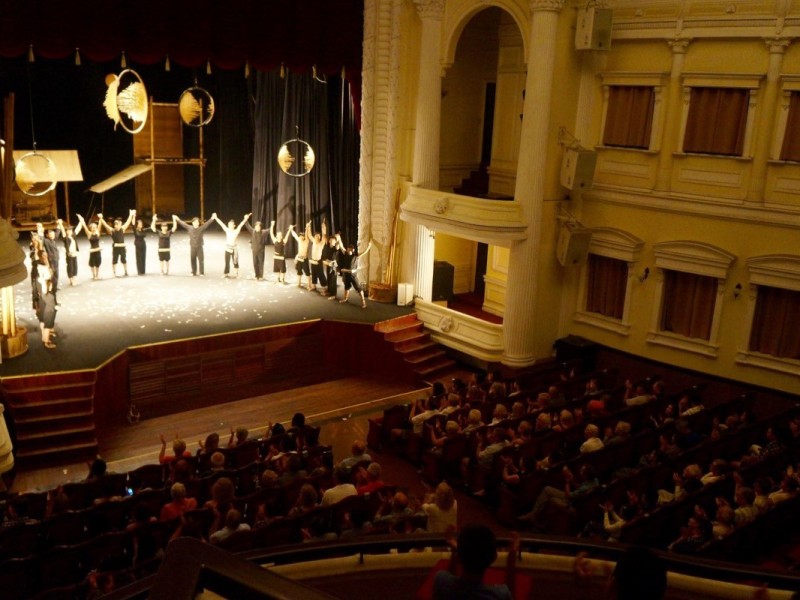
An Architectural and Cultural Gem of Ho Chi Minh City
Dominating Lam Son Square with its grand presence, the Saigon Opera House is a fascinating example of French architectural influence in Vietnam, reflecting the artistry of the late 19th-century French Third Republic. This building, with its ornate facades, sculptural detailing, and sweeping arches, remains one of the most visually striking structures in the city. With a design reminiscent of Paris’s Opéra Garnier, the Opera House transports visitors back to a time when architectural elegance and elaborate decorations symbolized prestige and artistry. The Saigon Opera House not only stands as a cultural landmark in Ho Chi Minh City but also as an iconic representation of Vietnam's dedication to preserving colonial architecture and transforming it into a thriving venue for modern performances.
The Opera House’s role extends beyond architecture; it is deeply woven into the cultural fabric of Vietnam. For decades, it has served as a space for both local and international performances, creating a stage where Vietnamese culture and traditions are celebrated through art. Today, the Saigon Opera House continues to captivate audiences with a variety of shows, from the captivating AO Show, which narrates Vietnamese rural life through a mix of acrobatics and dance, to traditional Vietnamese folk performances that showcase the country’s rich history. The Saigon Opera House’s unique blend of French design and Vietnamese art makes it an essential stop for anyone exploring the cultural depths of Ho Chi Minh City.
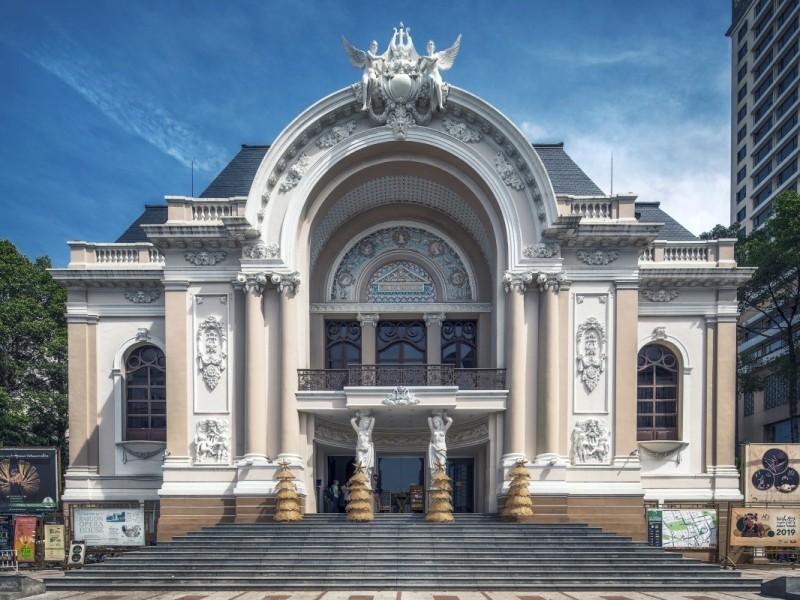
The Rich History of the Saigon Opera House
The history of the Saigon Opera House is as enchanting as its architecture. Originally constructed in 1897 as a theater for French colonial residents, it served as a venue for high-class entertainment, providing a space for French plays, concerts, and cultural gatherings. Designed by French architect Eugène Ferret, the building's architectural elements were inspired by the opulent style of the Third Republic in France, with richly adorned facades, grand arched windows, and a meticulously designed interior. The Opera House was a manifestation of French culture in the heart of Vietnam, an embodiment of colonial aspirations to bring European art and elegance to Southeast Asia.
Over the years, the Saigon Opera House underwent various transformations, reflecting Vietnam’s changing political and cultural landscape. During the Vietnam War, it temporarily served as the assembly hall for the National Assembly of South Vietnam, a role that shifted the building from an entertainment venue to a government facility. Following the end of the war, the Opera House was restored to its original purpose and began hosting cultural events once more, but with a renewed focus on promoting Vietnamese art and heritage. Today, it stands not only as a symbol of Vietnam’s colonial past but also as a living monument to the resilience and adaptability of Vietnamese culture.
Built During the French Colonial Era
Constructed as part of the colonial vision to make Saigon a “Little Paris of the East,” the Saigon Opera House was meticulously crafted to resemble the luxurious European theaters of the time. The building’s exterior, with its ornate sculptural elements and grand staircases, was designed to convey a sense of European grandeur, blending seamlessly with the surrounding colonial architecture. The Opera House quickly became a cultural focal point for French expatriates, offering a familiar taste of European arts and entertainment.
Every element of the design, from the arches to the stone carvings, was crafted with precision and brought to life by materials imported directly from France. The façade itself is adorned with intricate bas-reliefs, and statues modeled after the style of the Paris Opera House, underscoring the colonial ambition to recreate European sophistication in Saigon. This emphasis on architectural detail not only highlights the beauty of the structure but also reflects the colonial values and aspirations that shaped its creation.
Transformations Over the Years
The Saigon Opera House has witnessed significant transformations over its 125-year history, adapting to the political and social shifts that have defined modern Vietnam. During the tumultuous years of the Vietnam War, the Opera House took on a vastly different role, serving as the National Assembly Hall of South Vietnam. This shift in function marked a profound transformation, as the theater, once a symbol of French culture, became a seat of governance and politics during one of the most challenging periods in Vietnam’s history.
Following the reunification of Vietnam, the Saigon Opera House was meticulously restored in 1998 as part of an extensive renovation project aimed at preserving the country’s historical sites. The renovation honored the building’s original French architecture while updating its facilities to meet modern standards, thus ensuring its continued relevance as a cultural center. Today, the Opera House is designated as a national relic and stands as a beacon of both historical preservation and cultural revival, symbolizing Vietnam’s dedication to maintaining its heritage while embracing its future.
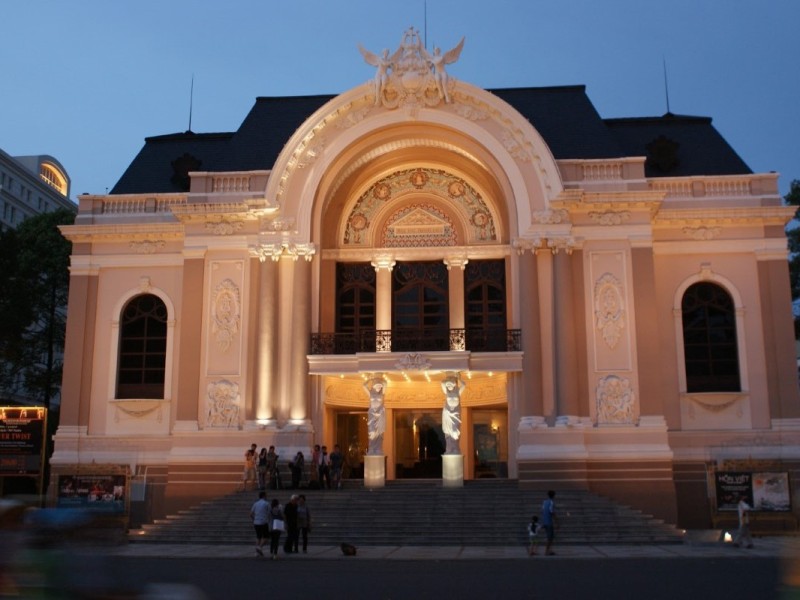
A Masterpiece of French Colonial Architecture
One of the most captivating aspects of the Saigon Opera House is its architectural splendor. Modeled after the Opéra Garnier in Paris, the Opera House captures the ornate detailing and grandiose style that defined the French Third Republic’s architectural approach. Every facet of the building’s design — from its sweeping arches and carved stone statues to its classic French windows — speaks of the opulence and precision associated with French art and architecture. Walking up the grand staircase that leads to the entrance, visitors are greeted by an intricate façade that blends symmetry with sophistication, showcasing sculptures and bas-reliefs inspired by the mythological figures of French folklore.
Inside, the Opera House is equally stunning, with its lavishly decorated hallways and chandelier-lit interiors that evoke a timeless elegance. The meticulous attention to detail is evident in every corner, with each element carefully selected to enhance the overall aesthetic. This dedication to architectural beauty makes the Saigon Opera House not just a place for performances but a work of art in itself, offering visitors a rare opportunity to experience the grandeur of French design within the context of Vietnamese culture.
Architectural Inspiration from the Opéra Garnier
The Saigon Opera House’s resemblance to the Opéra Garnier is no coincidence. Its architect, Eugène Ferret, deliberately drew inspiration from Paris’s famed opera house to bring a touch of French opulence to Saigon. The design incorporates similar elements, such as a richly decorated façade, a grand central staircase, and arched entrances that mirror the iconic design of the Opéra Garnier. The statues and carvings that adorn the exterior are also inspired by French aesthetics, with detailed sculptures that celebrate mythology and classical art forms, giving the building a truly European character.
This deliberate replication of the Parisian architectural style was intended to create a familiar and luxurious environment for the French residents of Saigon. The Opera House not only brought a piece of France to Vietnam but also served as a symbol of France’s cultural influence in its colonies. Visitors today can appreciate the building’s historical and aesthetic connection to the Opéra Garnier, making it an enduring symbol of the city’s colonial legacy.
Unique Features and Design Details
Beyond its resemblance to Parisian architecture, the Saigon Opera House has unique design elements that set it apart. The building’s façade is adorned with bas-reliefs and statues, many of which depict allegorical figures from Greek and Roman mythology, a nod to the neoclassical elements popular during the French Third Republic. Inside, the main auditorium is equally impressive, with crystal chandeliers and plush red velvet seating that contribute to an ambiance of elegance and refinement. The seating arrangement, originally designed to hold 1,800 spectators, has since been adapted to accommodate modern performance needs while retaining its classic charm.
One of the most distinctive features of the Opera House is its acoustics, which were engineered to create an immersive audio experience for the audience. The careful arrangement of seats and architectural layout enhances sound quality, allowing even the softest notes to resonate clearly throughout the space. This attention to acoustics, combined with the building’s visual beauty, makes attending a performance at the Saigon Opera House a truly multisensory experience that captivates visitors.
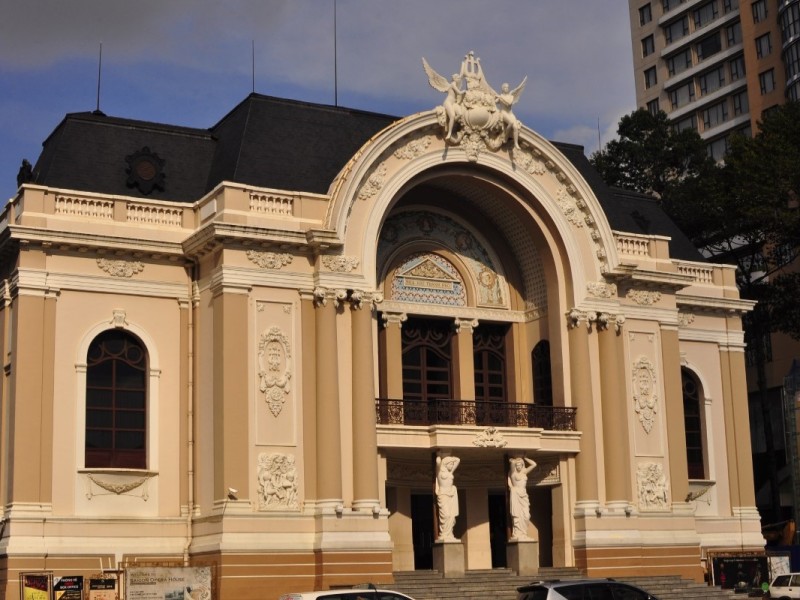
Must-See Highlights of the Saigon Opera House
For those planning to visit the Saigon Opera House, several highlights make this landmark unforgettable. From the architectural beauty that can be admired by day to the breathtaking illuminated views at night, the Opera House offers a diverse experience for visitors. Inside, a lineup of carefully curated performances showcases the best of Vietnamese traditional arts and modern performances, allowing visitors to immerse themselves in the culture of Vietnam while surrounded by European elegance. Each show brings a unique perspective on Vietnamese history, culture, and art, making the Opera House an enriching destination for anyone exploring Ho Chi Minh City.
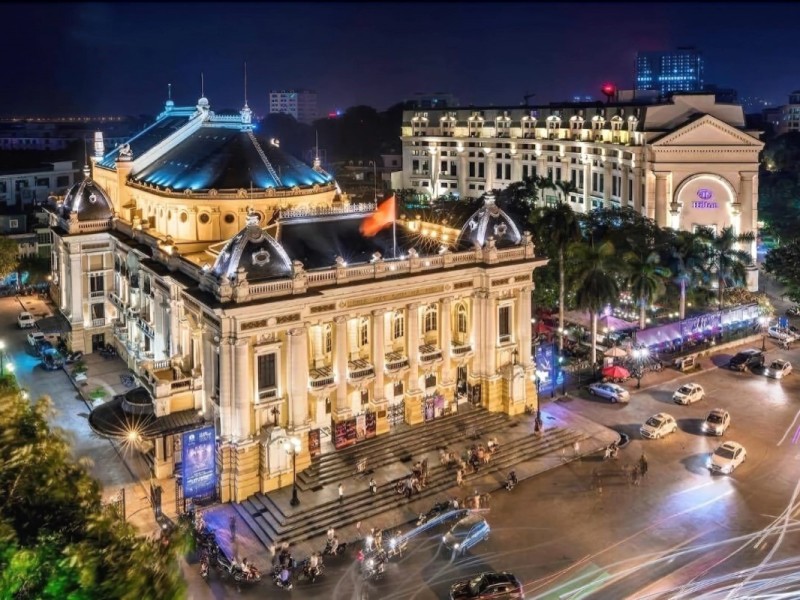
Daytime and Nighttime Beauty
One of the most enchanting aspects of the Saigon Opera House is how it transforms from day to night. By day, the intricate details of the architecture are fully visible, with sunlight accentuating the building’s rich textures and intricate carvings. Visitors can admire the meticulous craftsmanship, which includes sculptures, bas-reliefs, and classic French design elements that make the Opera House a true architectural masterpiece.
Viewing the Opera House by Day
During the day, visitors have the opportunity to take in the architectural features in all their glory. The soft natural light brings out the colors and textures of the stone, creating a visually stunning scene against the backdrop of Ho Chi Minh City’s modern skyline. It’s an ideal time for photography, with the intricate designs on the building’s exterior capturing the essence of French colonial artistry. The Opera House, with its neoclassical designs and mythological figures, provides a perfect contrast to the surrounding modern architecture, making it a favorite spot for photography enthusiasts.
Illuminated Beauty by Night
As night falls, the Saigon Opera House takes on a new dimension of beauty. Bathed in golden lights, the building glows against the city’s bustling backdrop, creating an atmosphere that is both elegant and inviting. The warm lighting accentuates the architectural details, casting shadows that highlight the intricacies of the sculptures and carvings. The nighttime view of the Opera House is an experience in itself, with the illuminated façade offering a romantic and serene atmosphere that draws visitors from across the city. For those looking to experience the charm of Saigon’s nighttime ambiance, the Opera House provides an unparalleled view that combines historical elegance with the lively spirit of modern Ho Chi Minh City.
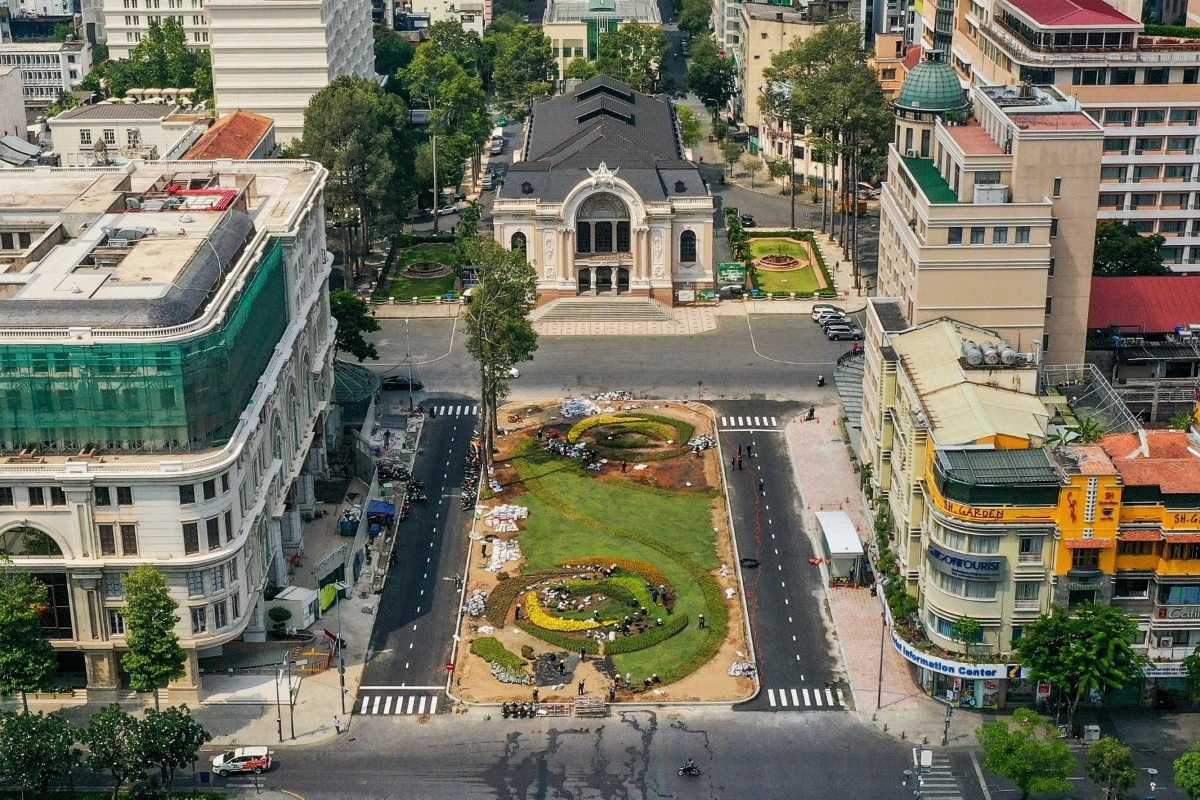
Popular Shows and Performances
The Saigon Opera House is celebrated not only for its architecture but also for the incredible cultural performances it hosts. From the renowned AO Show to The Mist and Teh Dar, each performance tells a unique story of Vietnam’s cultural heritage, weaving together traditional music, dance, and acrobatics to create an unforgettable experience for audiences.
The AO Show – Traditional Vietnamese Art
The AO Show is one of the Opera House’s most famous productions, known for its innovative approach to storytelling. Through a blend of acrobatics, dance, and traditional Vietnamese music, the show captures the essence of rural and urban life in Vietnam, presenting it in a way that is both poetic and dynamic. The AO Show is a must-see for anyone interested in understanding Vietnam’s cultural diversity, as it provides a rich portrayal of the country’s traditions and values.
The Mist and Teh Dar – Unique Cultural Shows
The Mist and Teh Dar performances are equally compelling, each offering a different perspective on Vietnamese life and culture. The Mist focuses on the daily lives of rice farmers, using contemporary dance to depict their connection to the land, while Teh Dar showcases the cultural heritage of Vietnam’s highland communities, complete with tribal music and vibrant costumes. These shows provide a deep and moving insight into Vietnamese culture, making the Opera House an essential destination for travelers seeking a meaningful connection with Vietnam’s artistic traditions.
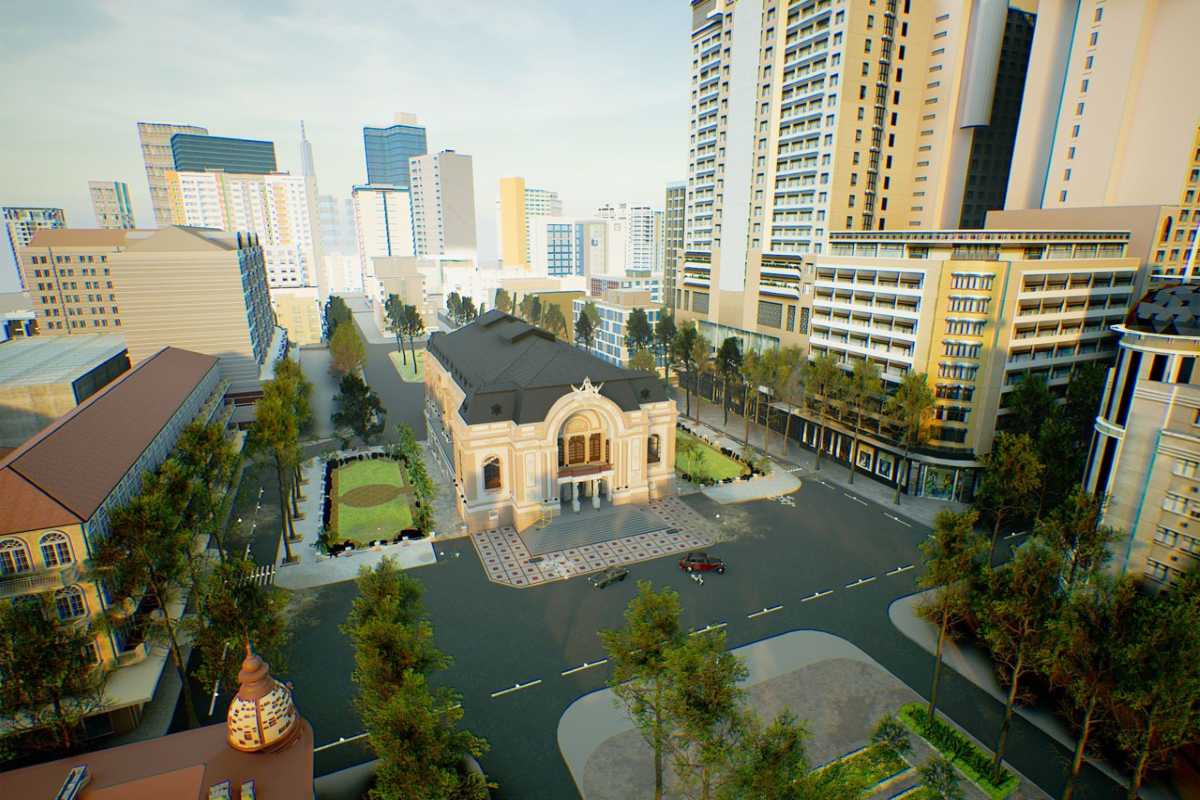
Exploring the Cultural Impact of the Saigon Opera House
The Saigon Opera House is more than just a historical building; it is a living tribute to Vietnam’s cultural heritage and a prominent venue for preserving and celebrating traditional and modern art forms. Designated as a national relic, the Opera House embodies Vietnam’s commitment to honoring its colonial architecture while embracing its role as a hub for contemporary and traditional performances. This cultural icon not only draws international visitors with its architectural beauty but also serves as a testament to the resilience and adaptability of Vietnamese culture. In the heart of Ho Chi Minh City, the Opera House continues to impact Vietnam’s cultural scene, offering performances that resonate with local audiences and travelers alike.
Through extensive renovation efforts, the Opera House has been meticulously preserved to maintain its French architectural essence, ensuring that future generations can experience a piece of Vietnamese history and artistic excellence. This dedication to preservation highlights Vietnam’s pride in its artistic legacy, with the Opera House playing a vital role in connecting modern audiences to the country’s historical and cultural roots. For visitors, the Opera House is not only a destination to witness performing arts but also a gateway to understanding Vietnam’s rich cultural narrative.
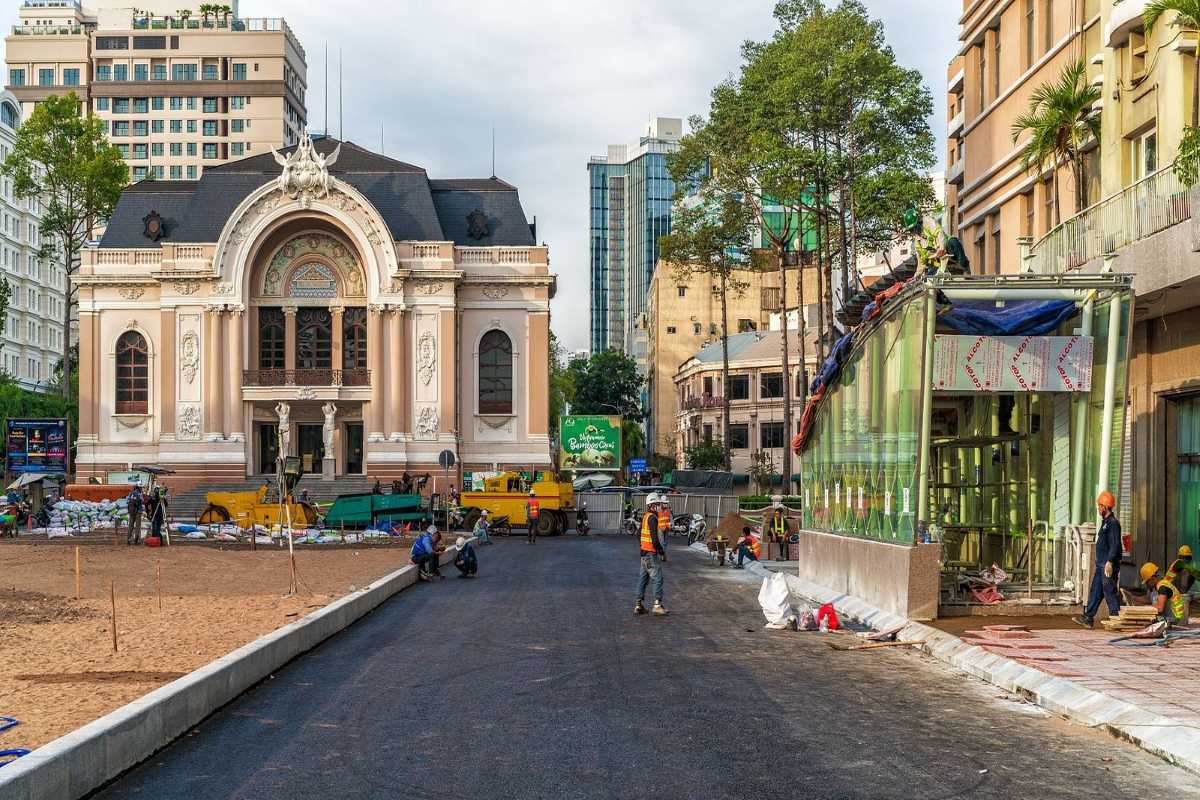
The Opera House as a National Heritage Site
The Saigon Opera House was officially recognized as a national relic in 2012, marking its significance as one of Vietnam’s premier cultural landmarks. This designation underscored the Opera House’s role in preserving Vietnam’s colonial architecture while promoting its cultural heritage. The building’s preservation has involved careful restoration to maintain its authentic French architectural style, including the detailed carvings, statues, and interiors that echo the aesthetic sensibilities of 19th-century France. Recognized as one of Ho Chi Minh City’s heritage sites, the Opera House stands as a cultural beacon, inspiring local pride and drawing global admiration for its enduring beauty and historical significance.
Preservation Efforts and 1998 Renovation
In 1998, the Saigon Opera House underwent a significant renovation to restore and preserve its original design, ensuring it would continue to represent Vietnam’s rich history. This restoration project meticulously preserved the French architectural elements that define the building’s character, from its ornate facades to the intricately carved statues that adorn the exterior. The renovation involved collaboration between Vietnamese and international experts to balance historical preservation with modern functionality, making the Opera House suitable for a new era of performances without compromising its architectural legacy.
The 1998 renovation was a milestone in historical preservation for Vietnam, as it marked a national commitment to safeguarding cultural landmarks for future generations. The careful restoration of the Opera House allowed it to retain its position as a cultural icon, continuing to host events that celebrate both traditional Vietnamese culture and international art forms. This dedication to preserving historical architecture reflects Vietnam’s broader efforts to honor its heritage and celebrate the diversity of influences that have shaped its identity.
Designated as a National Relic
The Opera House’s designation as a national relic in 2012 solidified its status as a cornerstone of Vietnamese cultural heritage. This recognition by the Vietnamese government reflects the Opera House’s importance as a link between the past and the present, preserving its historical value while promoting it as a space for cultural expression. Being classified as a national relic emphasizes the Opera House’s role as a cultural landmark in Ho Chi Minh City, representing not only Vietnam’s architectural heritage but also its dedication to the performing arts.
As a national relic, the Saigon Opera House attracts cultural enthusiasts, historians, and tourists eager to experience a landmark that has survived and thrived through significant periods of change. Its preservation serves as a reminder of the architectural and cultural ties between Vietnam and France, making it a living piece of history. The designation also brings added responsibility to maintain and protect the Opera House, ensuring it remains a symbol of Vietnam’s cultural pride and historical resilience.
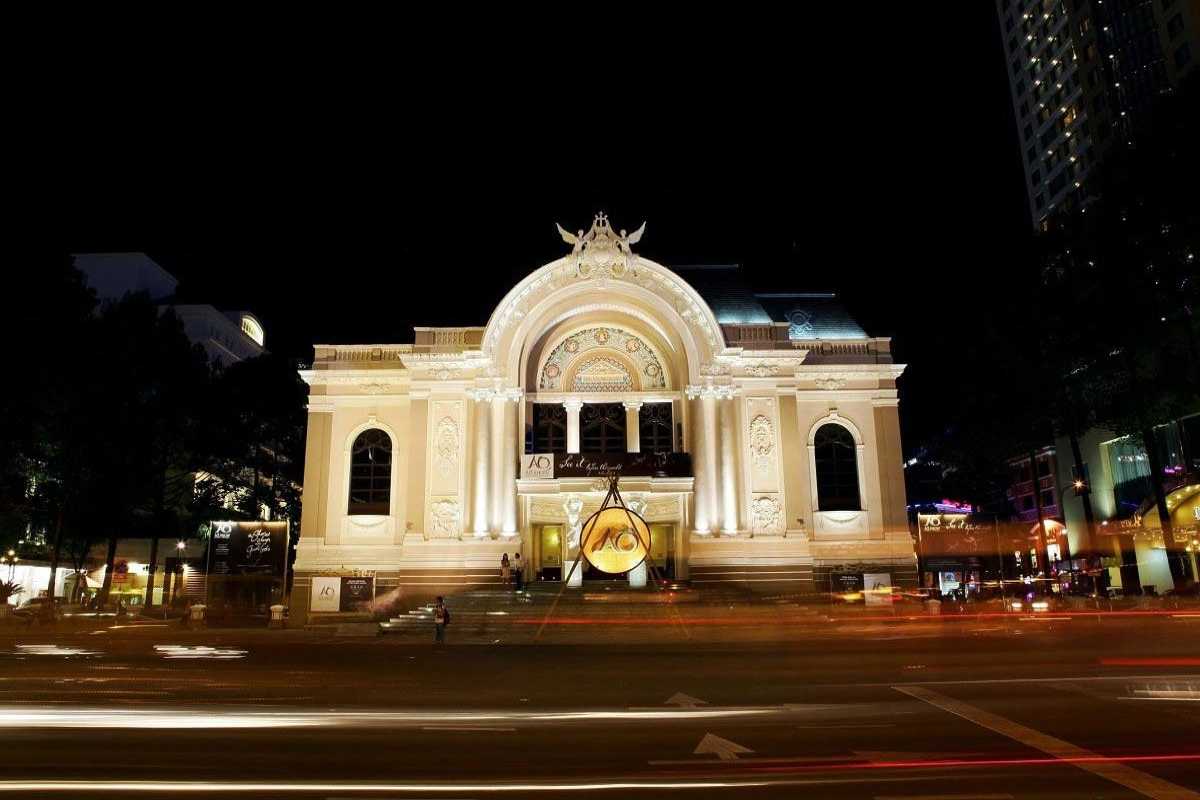
Cultural and Artistic Events Hosted Here
The Saigon Opera House is renowned not only for its architectural beauty but also for the diverse array of cultural performances it hosts, from traditional Vietnamese shows to grand international music events. These performances attract both locals and tourists, offering a window into Vietnamese performing arts and showcasing the country’s dedication to fostering a thriving cultural scene. As a prominent venue for Vietnamese art events, the Opera House regularly features programs that celebrate Vietnam’s artistic legacy while also welcoming international performers, making it a dynamic and inclusive cultural space.
Vietnamese Traditional Shows
Traditional Vietnamese shows are among the most popular performances at the Saigon Opera House, drawing audiences with their authentic representation of Vietnamese folk music, dance, and theater. These shows offer a glimpse into the cultural heritage of Vietnam, presenting art forms that have been passed down through generations. Performances such as traditional folk dances, water puppetry, and musical pieces highlight the rich artistic traditions of Vietnam, immersing audiences in the sounds, sights, and stories of Vietnamese culture.
For international visitors, these traditional shows provide an invaluable opportunity to experience Vietnam’s unique art forms firsthand. Local artists often perform pieces that incorporate instruments like the đàn tranh (a type of zither) and đàn bầu (a single-string instrument), which are integral to Vietnamese folk music. Through these performances, the Saigon Opera House serves as a cultural bridge, connecting audiences to Vietnam’s past and bringing its traditional art to life.
Modern and Classical Music Concerts
In addition to traditional Vietnamese shows, the Saigon Opera House also hosts an impressive selection of modern and classical music concerts, attracting music lovers from around the world. These concerts range from classical symphonies performed by Vietnamese and international orchestras to opera galas and contemporary music performances. The diversity of musical offerings allows the Opera House to cater to a wide audience, providing an array of artistic experiences that span different genres and eras.
Classical music concerts at the Opera House often feature works by celebrated composers such as Beethoven, Mozart, and Tchaikovsky, with Vietnamese musicians bringing these timeless pieces to life in an intimate, acoustically optimized setting. For those who appreciate contemporary music, the Opera House also presents performances that showcase modern Vietnamese compositions and experimental music, reflecting the country’s evolving musical landscape. The inclusion of both modern and classical music events solidifies the Opera House’s role as a versatile cultural venue, where tradition and innovation coexist in harmony.

Create Lasting Memories with Unique Experiences
A visit to the Saigon Opera House is more than just a sightseeing stop; it’s an opportunity to create unforgettable memories in a setting that blends architectural beauty with Vietnamese cultural experiences. Whether you’re exploring the Opera House as a couple or with family, the venue offers experiences tailored to every type of traveler. The ambiance, with its beautifully illuminated façade and grand interiors, transforms every show into a truly immersive experience, making it an ideal destination to create lifelong memories.
Imagine spending a romantic evening under the chandeliers, watching a performance that brings together traditional Vietnamese music and dance in a way that speaks to the soul. For families, the Opera House offers kid-friendly shows and guided tours that introduce children to Vietnam’s rich cultural heritage in an interactive way. Each experience at the Opera House invites visitors to connect with Vietnam’s artistic legacy, offering an enriching journey that goes beyond typical travel activities. From romantic shows to family-friendly tours, the Saigon Opera House provides unique experiences that leave visitors with cherished memories.
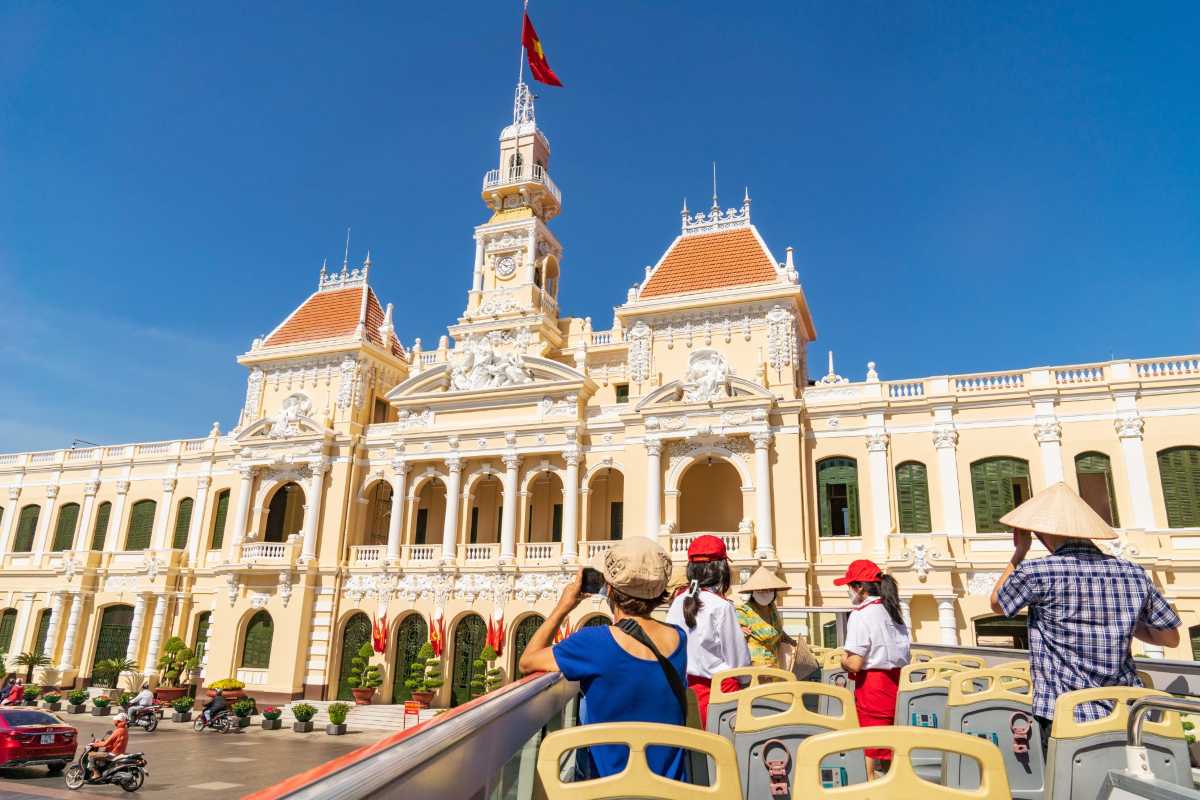
Romantic Evenings at the Saigon Opera House
The Saigon Opera House sets a perfect stage for romance, offering an elegant and intimate atmosphere ideal for couples looking to enjoy a special evening in Ho Chi Minh City. The grandeur of the building’s architecture, combined with its enchanting nighttime illumination, makes it a wonderful choice for a memorable date night in Saigon. Couples can enjoy a variety of performances, ranging from traditional Vietnamese shows that narrate stories of love and tradition to symphonic concerts that fill the hall with captivating melodies.
Couples visiting the Opera House often begin their evening with a leisurely stroll around Lam Son Square, where the Opera House is located, before stepping inside for a performance. For a truly romantic experience, many visitors opt for evening shows that take advantage of the building’s beautiful night lighting, creating a serene and magical ambiance. After the performance, couples can explore nearby dining options, with some of Saigon’s finest restaurants just a short walk away. Whether it’s French-inspired cuisine or traditional Vietnamese dishes, a romantic dinner nearby adds the perfect finishing touch to an evening at the Opera House.
The Opera House’s offerings, from traditional Vietnamese performances to classical music, provide a range of options that appeal to different tastes. For those who appreciate classic romance, performances of symphonic pieces by renowned composers provide an elegant and timeless experience. Alternatively, the AO Show, with its poetic storytelling and cultural richness, offers a uniquely Vietnamese romance that brings rural stories to life on stage. For couples seeking a special night, the Saigon Opera House is a perfect choice that combines art, culture, and romance in an unforgettable setting.
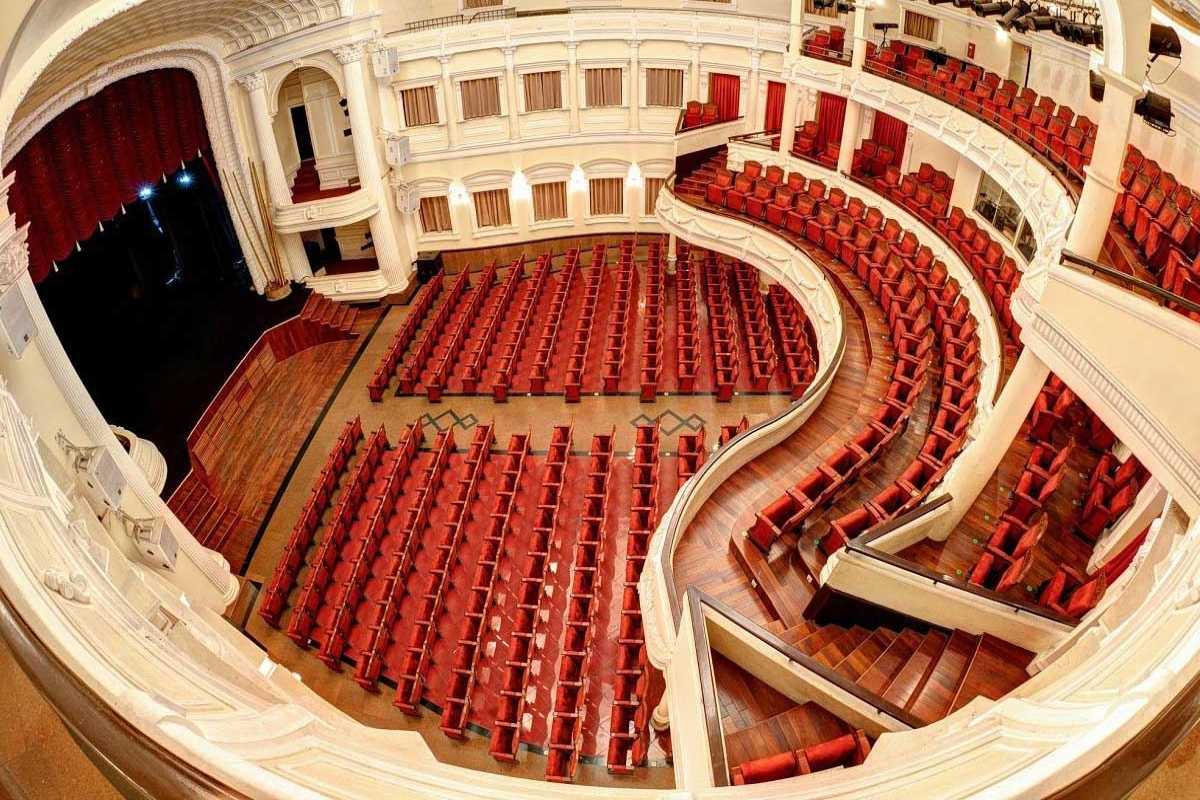
Family-Friendly Shows and Tours
The Saigon Opera House is also a welcoming destination for families, offering a variety of family-friendly performances and activities that introduce children to Vietnamese culture in a fun and engaging way. With its vibrant shows, interactive tours, and historical significance, the Opera House is an ideal spot for families looking to combine education and entertainment in Ho Chi Minh City.
For younger audiences, the Opera House hosts performances that incorporate elements of Vietnamese folk tales and traditional music, providing a glimpse into the country’s heritage through art that is easy for children to understand and enjoy. Shows like the AO Show and Teh Dar use acrobatics, colorful costumes, and storytelling that appeal to kids and parents alike, making these performances an enriching experience for all ages. Families can also take part in guided tours that explore the building’s history and architecture, giving children a chance to learn about Vietnam’s cultural background in an accessible and interactive format.
In addition to the shows, the Opera House itself is an architectural marvel that fascinates visitors of all ages. Children are often captivated by the grand staircase, the statues, and the chandeliers that make the interior feel like a scene from a fairy tale. For families visiting Ho Chi Minh City, the Opera House offers a way to spend quality time together while connecting with Vietnam’s artistic heritage. The unique combination of family-friendly performances and cultural experiences makes the Opera House a must-visit for families looking to create meaningful memories on their trip.

Plan Your Visit to Saigon Opera House
As you prepare to experience the Saigon Opera House, planning your visit carefully will ensure a seamless and unforgettable experience. From booking tickets to choosing convenient transportation and finding nearby accommodation, this guide covers everything you need to know for a well-organized trip to Ho Chi Minh City’s premier cultural destination. Whether you’re interested in attending a traditional Vietnamese performance or exploring the building’s historical significance through a guided tour, planning the logistics ahead of time will allow you to fully enjoy the magic of this architectural gem.
Booking tickets for the Opera House is straightforward, and there are options to suit every budget, from general seating to VIP tickets for the best views. The area surrounding the Opera House also offers excellent hotel accommodations, making it easy to find a place to stay within walking distance of this iconic attraction. Transportation options are plentiful, with choices ranging from convenient taxis to public transport, ensuring that getting to and from the Opera House is hassle-free. Let’s dive into the practical details to help you make the most of your visit.

Booking Tickets and Tour Options
Booking your tickets in advance is highly recommended for popular performances at the Saigon Opera House, as seats can fill up quickly, especially for sought-after shows like the AO Show, The Mist, and Teh Dar. To purchase tickets, visitors can book directly at the Opera House box office or use online ticketing services that provide options for different seating preferences. The Opera House offers a range of seating options, including VIP seats that provide premium views of the stage, allowing for an immersive and enjoyable experience. Ticket prices vary depending on the show and seating choice, but generally range from affordable options for general admission to premium pricing for VIP seats.
For those interested in exploring the Opera House beyond performances, there are also guided tour options available. These tours provide an in-depth look at the building’s architectural details, history, and cultural significance, offering a unique experience for visitors who wish to learn more about the Opera House’s place in Vietnamese heritage. Tours are typically available during the day, allowing visitors to explore the venue’s stunning interiors, appreciate the artistry of its design, and capture photographs in a quieter setting.
Whether you’re attending a performance or taking a guided tour, booking in advance is advisable to secure your preferred time and seating. The Opera House is one of Ho Chi Minh City’s most popular attractions, so planning ahead ensures you won’t miss out on a memorable experience. Additionally, VIP seating options provide added comfort and exclusive views, making it a great option for those looking to elevate their experience.
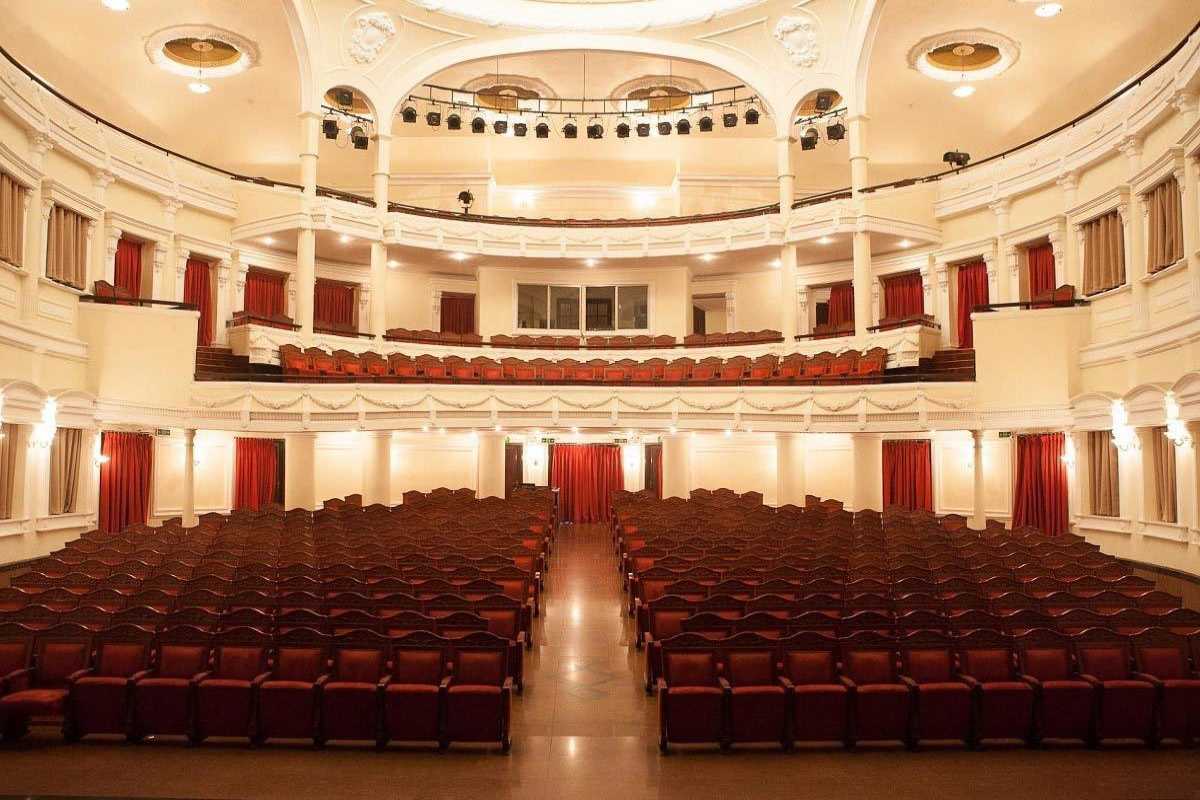
Planning Your Travel and Accommodation
Getting to the Saigon Opera House is convenient, with several transportation options that make it easily accessible from different parts of Ho Chi Minh City. Located in District 1, the Opera House is a central landmark, surrounded by hotels, restaurants, and shopping areas. For visitors staying nearby, the Opera House is within walking distance, providing an opportunity to explore the city’s vibrant streets. For those coming from other parts of the city, taxis, rideshares, and public buses offer quick and easy access.
If you’re planning to stay close to the Opera House, there are numerous hotels near the Saigon Opera House that cater to various budgets and preferences. Luxury hotels like the Caravelle Saigon and Park Hyatt Saigon offer five-star accommodations with excellent amenities, perfect for visitors looking to indulge in a luxurious experience. For travelers seeking more budget-friendly options, hotels such as the Liberty Central Saigon Citypoint provide comfortable stays with modern facilities. Staying nearby allows you to fully immerse yourself in the heart of Ho Chi Minh City’s cultural district, with easy access to not only the Opera House but also other landmarks like the Notre-Dame Cathedral and Ben Thanh Market.
Whether you’re traveling solo, as a couple, or with family, finding accommodation in Ho Chi Minh City that suits your needs is simple. The Opera House’s central location makes it a convenient point from which to explore the city, ensuring that visitors can easily return to their hotel after an evening performance. Taxis and rideshares are readily available outside the Opera House, providing a convenient and safe option for getting back to your accommodation after a memorable night at this historic venue.
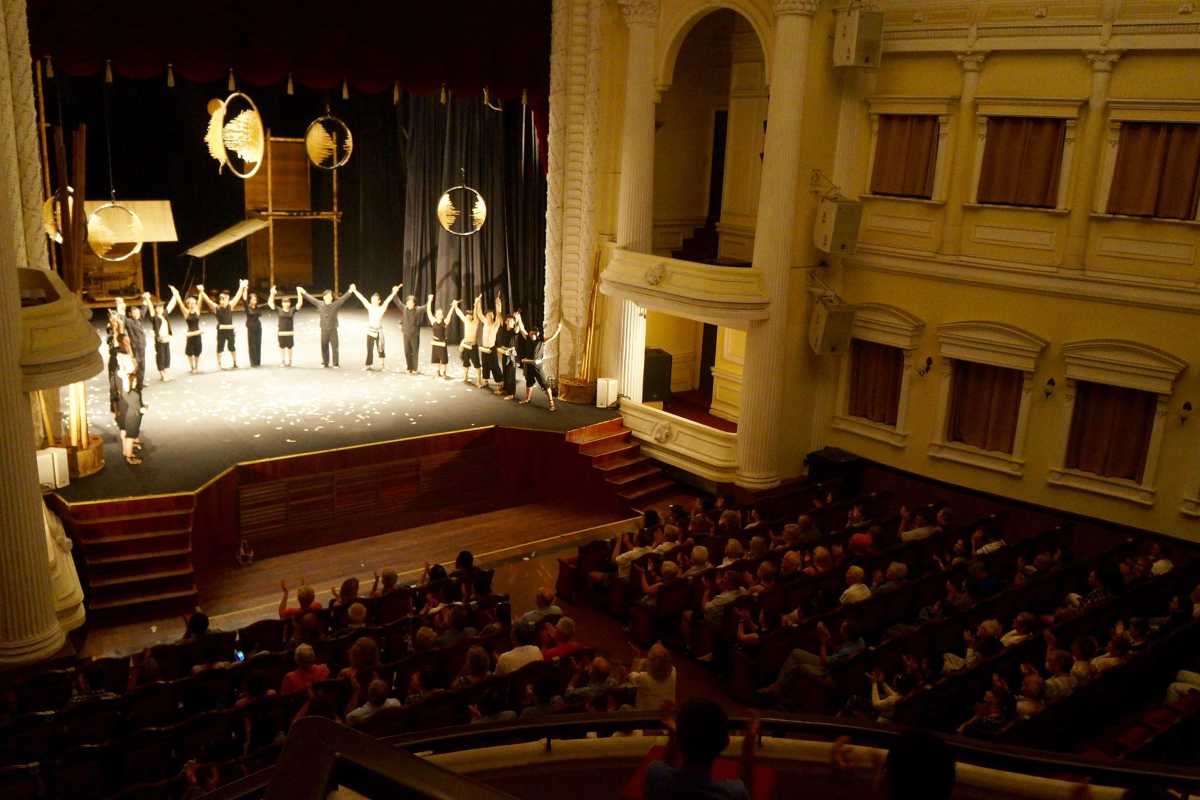
Saigon Opera House – A Must-Visit Cultural Landmark
The Saigon Opera House stands as one of Vietnam’s most treasured cultural landmarks, representing the heart and soul of Ho Chi Minh City’s cultural scene. With its elegant French-inspired architecture, deep historical roots, and vibrant programming of performances, the Opera House offers visitors a glimpse into Vietnam’s past while celebrating its dynamic present. From the building’s ornate façade to the detailed carvings and sculptures that adorn its interiors, every element of the Opera House is steeped in artistry and history. For travelers exploring the city, the Opera House isn’t just an architectural marvel but a living testament to Vietnamese heritage and the preservation of its artistic traditions.
A visit to the Saigon Opera House promises a unique experience that is both enlightening and memorable. Attending a performance here offers a chance to witness traditional Vietnamese shows, ballet, opera, and symphonies performed in a grand setting that is as much a part of the experience as the shows themselves. The ambiance, with its richly decorated halls and classical design, immerses visitors in a blend of Vietnamese and French culture, providing a travel experience that goes beyond sightseeing. Whether you're captivated by the historic architecture, drawn in by the cultural performances, or simply looking to enjoy a night of elegance, the Opera House offers something for everyone, making it a must-see attraction.
As one of Ho Chi Minh City’s top cultural experiences, the Saigon Opera House deserves a spot on every travel itinerary. Its central location in District 1 makes it easy to reach, and the surrounding area offers plenty of dining and accommodation options for a complete and convenient visit. For those wanting to experience the richness of Vietnam’s artistic heritage, the Opera House is the ideal destination to connect with the local culture. Be it a daytime tour or an evening show, the Saigon Opera House is sure to leave a lasting impression, making it a highlight of any journey through Vietnam. Make sure to add this remarkable venue to your plans and experience a truly unforgettable piece of Vietnamese cultural history.
Nhật Hoàng
Faqs
The Saigon Opera House is a historic cultural landmark that symbolizes Vietnam’s French colonial past and its rich artistic heritage. Built in 1897, it served both as a venue for French cultural events and later as a government assembly hall.
The Opera House reflects the architectural grandeur of the French Third Republic and has witnessed Vietnam’s political and cultural transformations. Key points include:
- Constructed by French architect Eugène Ferret as a symbol of colonial prestige
- Served as the National Assembly Hall during the Vietnam War
- Restored in 1998 to preserve its original design and cultural purpose
- Now designated as a national relic, embodying Vietnam’s dedication to heritage
Explore the Saigon Opera House to experience a unique blend of history, architecture, and Vietnamese culture.
The Saigon Opera House is approximately 6 kilometers southeast of Tan Son Nhat International Airport, making it easily accessible by road. Visitors can take taxis, rideshares, or public transportation directly to District 1, Ho Chi Minh City’s central district.
Tips for getting there include:
- Taxi or rideshare services take about 20–30 minutes depending on traffic
- Public buses connect the airport to District 1 with transfers; check current routes
- The Opera House is located at 7 Lam Son Square, a well-known landmark in central Ho Chi Minh City
Plan your trip with local transport options for a convenient arrival at this iconic cultural venue.
Entry to the Saigon Opera House is generally included with ticket purchase for performances or guided tours. There is no fee to view the exterior or Lam Son Square area.
Key details about fees:
- Performance ticket prices vary by show and seating choice
- Guided tours may have a separate fee, often lower than show tickets
- No free access inside without a ticket due to preservation and event management
Check official ticket sources before your visit to plan your budget for experiencing the Opera House fully.
The Saigon Opera House is open to the public mainly during showtimes and guided tours. Typical hours vary depending on scheduled performances.
General information:
- Box office hours usually run from morning until evening on show days
- Guided tours often operate during daytime, around 9 AM to 5 PM
- No fixed daily opening hours as access depends on events
Confirm show and tour times in advance to plan your visit effectively.





